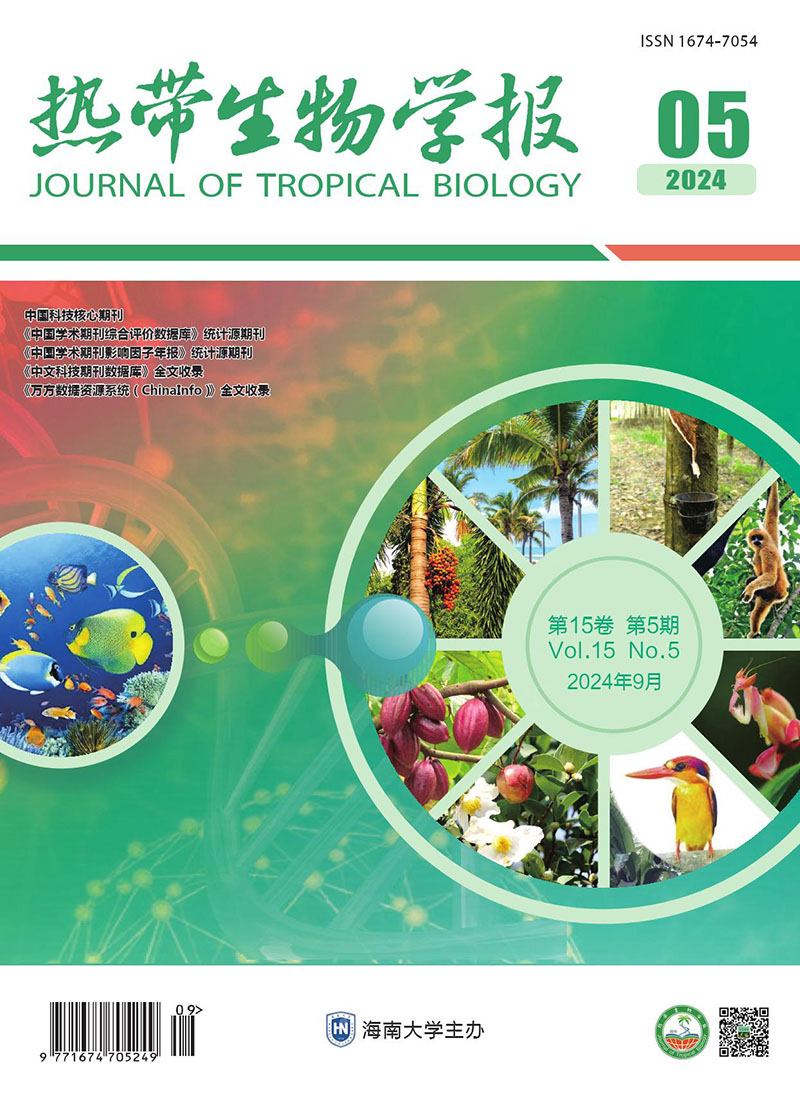|
[1]
|
CHEN J Y, BAO H, LIU S, et al. First report of ring spot disease on sugarcane caused by Curvularia ischaemi in China[J]. Plant Disease, 2022, 107(5):1627. |
|
[2]
|
汪全伟,吴伟怀,兀旭辉,等.甘蔗环斑病菌鉴定及其生物学特性分析[J].热带作物学报, 2016, 37(11):2210-2215. |
|
[3]
|
暴怡雪,张木清.中国甘蔗主要真菌性病害研究进展[J].中国糖料, 2016, 38(5):63-65. |
|
[4]
|
霍秀娟,李朝生,陆荣生.广西甘蔗病害种类调查与鉴定[J].安徽农业科学, 2013, 41(10):4368-4369. |
|
[5]
|
方中达.植病研究方法[M]. 3版.北京:中国农业出版社, 1998:122-145. |
|
[6]
|
孙广宇,宗兆锋.植物病理学实验技术[M].北京:中国农业出版社, 2002:206. |
|
[7]
|
LU Q, HU H, MO J, et al. Enhanced amplification of bacterial and fungal DNA using a new type of DNA polymerase[J]. Australasian Plant Pathology, 2012, 41(6):661-663. |
|
[8]
|
O'DONNELL K, CIGELNIK E. Two divergent intragenomic rDNA ITS2 types within a monophyletic lineage of the fungus Fusarium are nonorthologous[J]. Molecular Phylogenetics and Evolution, 1997, 7(1):103-116. |
|
[9]
|
AVESKAMP M M, DE GRUYTER J, WOUDENBERG J H C, et al. Highlights of the Didymellaceae:a polyphasic approach to characterise Phoma and related pleosporalean Genera[J]. Studies in Mycology, 2010, 65:1-60. |
|
[10]
|
HOU L W, GROENEWALD J Z, PFENNING L H, et al.The phoma-like dilemma[J]. Studies in Mycology, 2020,96:309-396. |
|
[11]
|
HUANG Y K, LI W F, ZANG Y Z, et al. Color illustration of diagnosis and control for modern sugarcane diseases, pests, and weeds[M]. China Agriculture Press,2018:17-18.. |
|
[12]
|
BAO Y, XU Y, WANG S, et al. First report of Fusarium sacchari that causes sugarcane wilt disease in China[J].Plant Disease, 2020, 104(8):2289.. |
|
[13]
|
LI J, ZHANG R Y, WANG X Y, et al. First report of Alternaria tenuissima causing leaf blight on sugarcane in China[J]. Plant Disease, 2021, 105(4):1222. |
|
[14]
|
霍秀娟.广西甘蔗病害种类调查与鉴定[J].安徽农业科学, 2013, 41(10):2. |
|
[15]
|
RAZA M, ZHANG Z F, HYDE K D, et al. Culturable plant pathogenic fungi associated with sugarcane in Southern China[J]. Fungal Diversity, 2019, 99(1):1-104. |
|
[16]
|
闫浩浩,米耀族,桑明玉,等.蓝靛果叶斑病病原高粱附球菌(Epicoccum sorghinum)分离鉴定及生物学特性[J].北方园艺, 2023(5):39-46. |
|
[17]
|
黄鈜琳,尹桥秀,江仕龙,等.茶叶斑病病原菌高粱附球菌(Epicoccum sorghinum)的鉴定及生物学特性[J].热带作物学报, 2021, 42(11):3269-3277. |






 DownLoad:
DownLoad: